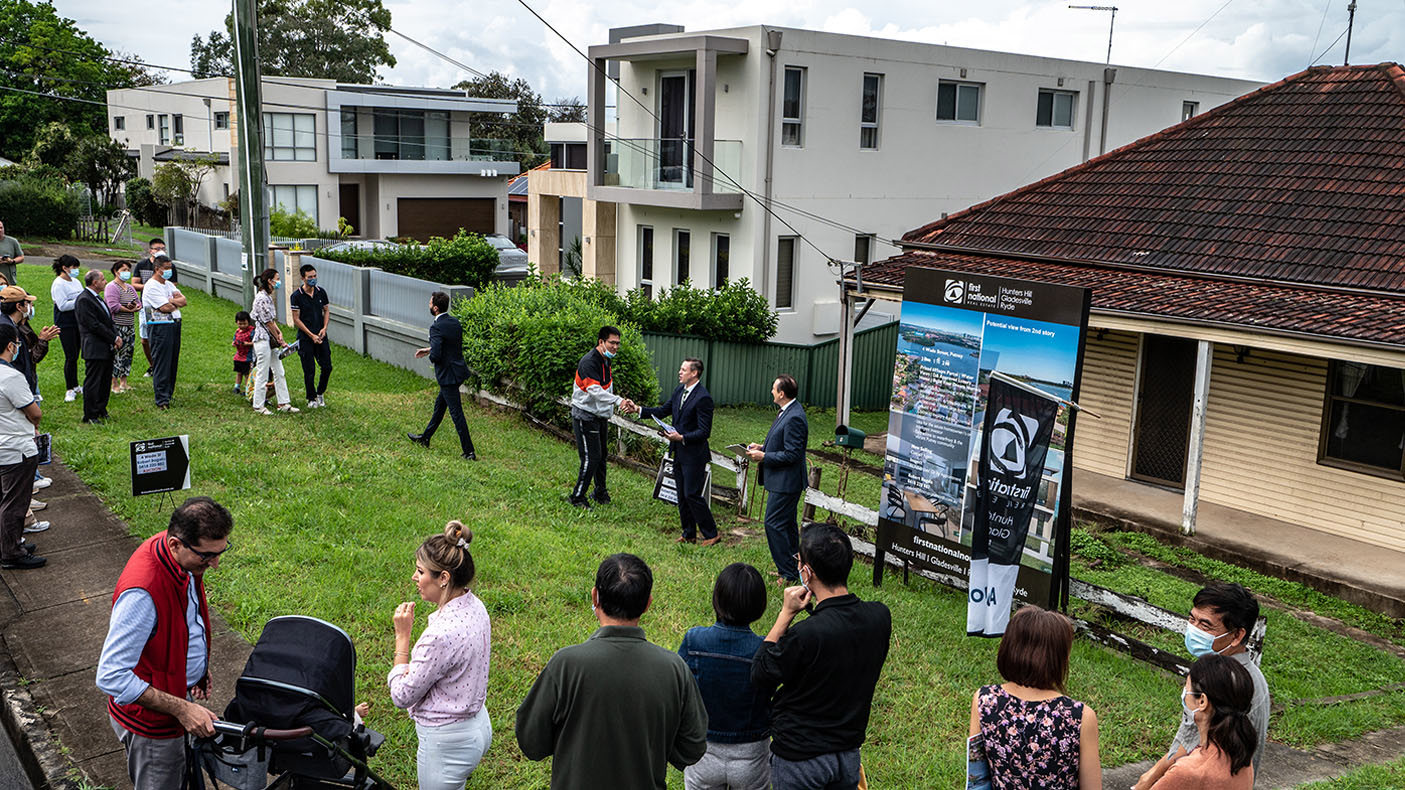Houses have always attracted a higher price than units, but the gap between the two has expanded to record levels over the last four years.
According to new data from property research company CoreLogic released today, the "house premium" jumped from 16.7 per cent in March 2020 to 45 per cent last month – meaning the average house in Australia now costs $293,950 more than the average unit.
That wasn't down to a drop in apartment prices, but instead a far more rapid surge in the cost of buying a house.
READ MORE: Major bank forecasting six interest rate cuts by middle of next year
CoreLogic said the rise in house prices came on the back of people wanting more space and being able to live remotely during the pandemic, as well as increasing land value and the lack of supply.
"The house premium rose sharply through the pandemic upswing as more people sought out space and were more willing and able to live further afield in our cities," research director Tim Lawless said.
"While we saw the premium contract through the early part of the rate hiking cycle as house values fell more than unit values, across the combined capitals the gap between house and unit values has since rebounded to a new record high as house values once again rise at a faster pace than units."
Unsurprisingly, the city with the biggest house premium – as well as the sharpest rise over both the last four years and last 12 months – is Sydney, where the average house is 68.4 per cent more expensive than the average unit.
Canberra (65 per cent), Adelaide (58.1 per cent), Brisbane (56.3 per cent) and Melbourne (55 per cent) all also have above-average house premiums, as does Darwin (55.4 per cent).
However, the Northern Territory capital was the only major city where the gap between house and unit prices closed in the past four years, by 12.2 percentage points.
That gap also closed in Brisbane (by 2.2 percentage points), Adelaide (1.5) and Hobart (3.2) in the last year.
"This could be reflective of homebuyers seeking out more affordable housing options, which has diverted more demand towards units," Lawless said.
Of all the suburbs in Australia, the housing premium is the worst in Bellevue Hill, in Sydney's east, where it sits at 525.7 per cent – a difference of more than $8 million.
READ MORE: What is negative gearing and why is there a push to change it?
Nearby Vaucluse sits at number two on that list at 499.8 per cent, while the rest of the top ten is dominated by inner-city suburbs in Sydney, Melbourne and Perth.
Lawless said the data suggested a greater share of homeowners would turn towards apartments.
"House prices have moved out of reach for a growing portion of the population, especially those seeking a first home or lower-income households," Lawless said.
"With housing affordability remaining a key challenge across Australia, the substantially lower price points across the medium to high-density sector are likely to become increasingly in demand as buyers become more willing to sacrifice space for proximity to essential amenities.
"Alongside lower prices, medium to high-density housing options are often strategically located close to transport networks, major working nodes and high amenity precincts."




